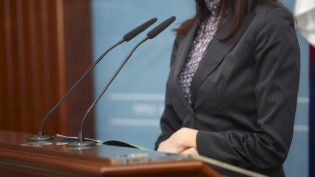
Gone are the days when brands could just broadcast their message and reach their audience. They now need a good story to break through the noise.
 Author: Jonah Sachs is the CEO of branding agency Free Range Studios, and author of Winning the Story Wars: Why Those Who Tell (and Live) the Best Stories Will Rule the Future. Sign-up for the next e-Workshop by Free Range Studios titled, “Introduction to Breakthrough Storytelling.”
Author: Jonah Sachs is the CEO of branding agency Free Range Studios, and author of Winning the Story Wars: Why Those Who Tell (and Live) the Best Stories Will Rule the Future. Sign-up for the next e-Workshop by Free Range Studios titled, “Introduction to Breakthrough Storytelling.”
As the media landscape continues to evolve, audiences are gaining more and more control over the information they view and share. To remain relevant, brands need to know how to tell compelling stories to reach them.
Traditional messages in the old broadcast style—exalt your product and tell your audiences why they need it now—are at best overlooked and forgotten; at worst, ridiculed. But successful stories, such as Dove’s Real Beauty Sketches, can garner 150m YouTube views in a couple of months and supercharge brand awareness and loyalty—without talking about the product at all. This is what success looks like for brands that shift from broadcast messaging to storytelling.
The transformation begins by realizing that your brand is nothing more than an ongoing story—a set of meaningful emotional experiences unfolding between itself and your audiences. Just like stories, brands can be inspiring, clear and actionable, or self-important, bland and confusing. The inspiring ones light up social networks, passing virally from storyteller to storyteller. The others instantly disappear.
Here are four simple steps that will help your brand become effective at storytelling.
1. Craft Your Myth
While stories may seem like simple fun, they are actually deeply important. Stories act like cultural DNA—tiny packets of information that build tribes and societies. The stories we love most tell us what people like us value, what they don’t, and what they want for the future. These core stories are known as myths, and every society uses them to forge a shared identity. We’re programmed by evolution to look for these stories and share them.
Key ingredients of myths include:
- An explanation about how the world works
- Meaning, which helps audiences gain a deeper understanding of who they are
- A story or narrative that underlines the myth’s lessons
- A ritual for addressing the lessons in audiences’ own lives
How can brands create a myth? First, identify an important truth that matters to your audiences and unite your brand communications around it. Show the truth playing out in the lives of relatable characters. Then give your audiences simple rituals by which to proclaim their allegiance to it and to your tribe. If you can define and defend these elements, you won’t just build a powerful brand story, you’ll also create a living brand myth.
For example, Dove’s story uses all four myth components to unite women with a sense of shared identity and evangelism:
- Explanation: Society makes women believe they’re less beautiful than they are.
- Meaning: “You are more beautiful than you think.”
- Story: Dove shows, not tells, these points through people its audience can relate to.
- Ritual: Sharing the message becomes an act of defiance.
Result: Dove’s story was widely shared, while other more typical shampoo ads are not.
2. Know Your Hero
Joseph Campbell, the renowned mythologist, said that listening to stories of ordinary people called to great things fortifies our belief that we can become heroes in our own lives.
In the past, when audiences had no choice about the media they consumed, the traditional approach was to cast audiences as the damsel in distress, saved by hero brands with a magic solution. Today, nobody wants to hear a story in which the consumer is the victim and your brand is the hero.
The stories that work best today cast the audience as the hero. Think of Nike’s “Just Do It,” Obama’s “Yes We Can!” or Apple’s “Think Different.” These brands didn’t talk about how great they were; they talked about how great their audiences could be. That’s what excites people into sharing content these days.
3. Live Your Story
In order to tell better stories, brands must actually be better stories. Our brave new media world hasn’t just put audiences in charge; it has also given them the tools to instantly peel back the curtain on marketing campaigns and look at the substance behind them.
This means that standing for larger truths and empowering audiences to see themselves as heroes can lead to much higher expectations, which, of course, comes with risk. Imagine the anger, disappointment and social-media buzz that would erupt if Dove followed up their Real Beauty story with a hyper-sexual campaign that reinforced the beauty myth.
Telling powerful stories calls for deeper authenticity from brands. While that may not always be easy, when you prove your commitment to a more just and sustainable world, your stories gain more traction. Another advantage is that stories guide us into a deeper sense of our values, transforming our brands as we work to live up to our stories. This journey to deeper authenticity, incidentally, makes for great viral story fodder and has built sensational amounts of loyalty for brands such as Patagonia.
4. Practice Makes Perfect
Telling effective stories is a skill. And like any skill, it can be learned. While you can find many books and articles about storytelling (which are great for inspiration, advice, and theory), the best way to learn how to craft your unique story is to immerse yourself in the learning experience through an interactive medium. Storytelling is a group experience, so the creation of the story should be too. Therefore, seek out a learning format that utilizes conversation and two-way dialogue with a diverse group so you can get real-time feedback and opportunities to practice getting the story just right.
Ultimately, storytelling is a mindset shift. With knowledge and practice, you can create and tell your brand’s story in a way that’s epic, that empowers, and that produces results.
Perhaps, one day, Google’s algorithm will guarantee us all brand loyalty at the push of a button. Until then, the ancient art of storytelling offers our clearest path to success.
 Author: Jonah Sachs is the CEO of branding agency Free Range Studios, and author of Winning the Story Wars: Why Those Who Tell (and Live) the Best Stories Will Rule the Future. Sign-up for the next e-Workshop by Free Range Studios titled, “Introduction to Breakthrough Storytelling.”
Author: Jonah Sachs is the CEO of branding agency Free Range Studios, and author of Winning the Story Wars: Why Those Who Tell (and Live) the Best Stories Will Rule the Future. Sign-up for the next e-Workshop by Free Range Studios titled, “Introduction to Breakthrough Storytelling.”
Published: December 11, 2013
3400 Views
3400 Views












